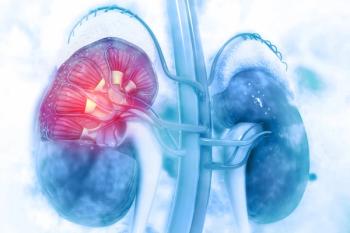
Miami Breast Cancer Conference® Abstracts Supplement
- 42nd Annual Miami Breast Cancer Conference® - Abstracts
- Volume 39
- Issue 4
- Pages: 51-52
64 A Prospective Study to Accurately Define the Nipple-Ward Margins in Patients Undergoing Lumpectomy for Breast Cancer
Background
Breast conserving therapy (BCS) followed by adjuvant radiotherapy has been shown to be as effective as mastectomy in terms of oncological outcomes. Ensuring negative resection margins is critical to minimizing recurrence, with studies supporting the benefit of shaving additional margins during BCS. However, there is limited data on which specific margin contributes most to re-excision rates. A retrospective study at our institution investigated the role of the nipple-ward margin (margin of tissue oriented in the direction of the nipple in situ) and how it contributed to re-excision rates by correlating imaging findings with surgical pathology. The study found that 38.8% of re-excisions were due to positive nipple-ward margins, with nearly 50% of single-positive margins in this direction. This study aims to identify true nipple-ward margins immediately after surgical excision to determine their role in ductal carcinoma in situ (DCIS) and invasive breast cancer spread.
Materials and Methods
This prospective study will recruit women aged ≥ 18 years with DCIS or invasive breast cancer undergoing lumpectomy. Exclusion criteria include re-excision surgery, central lumpectomy with nipple removal, and mastectomy. Once informed consent is obtained, patients will undergo standard lumpectomy. Once the specimen is removed, an additional suture marking the nipple-ward margin will be placed (in addition to institution-specific standard suture orientation markings). Surgeons will also note distance from nipple-ward margin to nipple as well as distance from incision to lesion. Pathology will be reviewed with emphasis on the nipple-ward margin, looking for residual tumor cells on ink for invasive cancer and less than a 2-mm margin for DCIS. Patient factors, tumor characteristics, and treatment modalities (eg, age, race, body mass index, receptor status, stage, neoadjuvant chemotherapy, etc.) will be retrospectively reviewed. Statistical analysis will assess the correlation between positive nipple-ward margins, re-excision rates, and other variables.
Status
Patient enrollment began in November 2024 and will continue with the goal of recruiting at least 100 patients within a single institution. The anticipated completion date will be November 2025.
Articles in this issue
Newsletter
Stay up to date on recent advances in the multidisciplinary approach to cancer.



















































































